
Children’s Vision Lab
Dr. Vera-Diaz has developed a successful research program at NECO, funded by the NIH. She investigates mechanisms contributing to the development of myopia, specifically, optical, retinal and visual processing structures and functions of the human visual system.
PeopleResearch ProjectsPublicationsParticipate
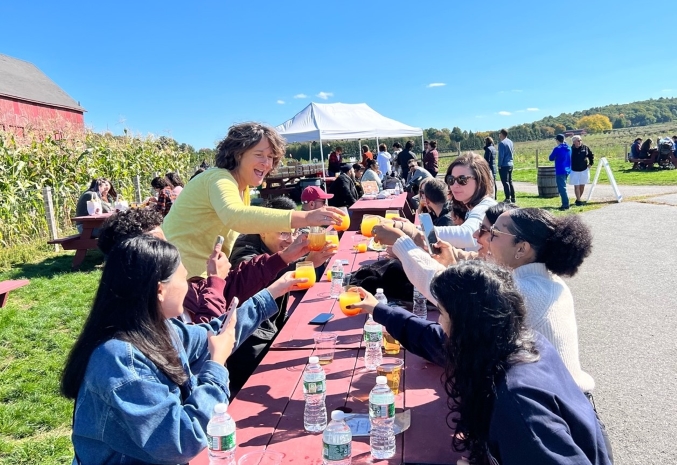
Members

Fuensanta A. Vera-Diaz, OD, PhD
Principal Investigator
Associate Professor of Optometry
Dr. Vera-Diaz is a clinical scientist primarily interested in investigating the effect of image perception on visual functioning in the progression of refractive errors, particularly myopia. She has a strong publication record and serves as a reviewer for multiple journals and is a reviewer in NIH study panel sections. Dr. Vera-Diaz also leads our Myopia Control Clinic at our Commonwealth NECO Center for Eye Care clinic.
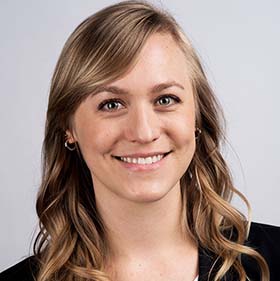
Kristen L. Kerber, OD, MS, FAAO
Associate Professor of Optometry
Projects: PICNIC (Investigating Contributing factors to Nearsightedness In Children). The Refractive Error and Axial Length (REAL) Growth Charts Project. Impact of Environmental Factors in the Success of Myopia Control Treatments. CHAMP: study of NVK-002 in children with myopia.
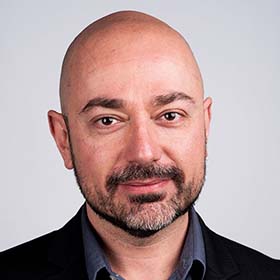
Thanasis Panorgias, MS, PhD
Associate Professor of Vision Sciences
Projects: PICNIC (Investigating Contributing factors to Nearsightedness In Children). Development of Novel ERG and Psychophysics for Evaluation of Horizontal Cell Function in Humans. Relationship between Axial Length and Retinal Structure and Function.

Peter J. Bex, PhD
Chair and Professor of Psychology
Projects: PICNIC (Investigating Contributing factors to Nearsightedness In Children). Myopes Ability to See Blur and Accommodate to Virtual 3D Images. Peripheral Awareness and the Development of Refractive Error. Development of Feasible Methods to Clinically Evaluate Suppression and Stereopsis Thresholds. Eye Movements and Refractive Error.
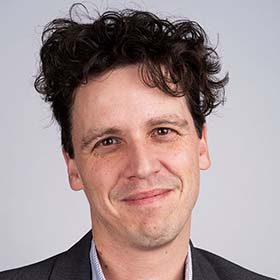
Chris Taylor, PhD
Associate Professor of Vision Sciences, NECO
Project: AR Visual Function Limits Imposed by the Retinal Image Quality.
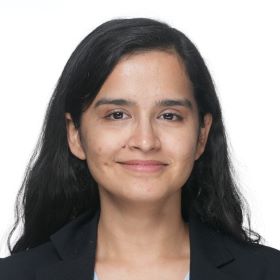
Deepa Dhungel, BScOptom, PhD
Post-Doctoral Fellow, NECO
Projects: PICNIC (Investigating Contributing factors to Nearsightedness In Children). AR Visual Function Limits Imposed by the Retinal Image Quality.

Samuel Smithers, PhD
Postdoctoral Research Associate, NEU, Boston.
Project: AR Visual Function Limits Imposed by the Retinal Image Quality.

Katie Green, OD, FAAO
Associate Professor of Optometry, NECO
Attending, NECO Center for Eye Care, Commonwealth
Projects: Efficacy in Controlling Myopia in Young Children using DOT 0.2 Spectacle Lenses (EUCALYPTUS). Clinical Evaluation of Innovative Spectacle Lens in Slowing Myopia Progression (FIN).

Anh Bui, OD, MSc, FAAO
Assistant Professor of Optometry, NECO
Attending, NECO Center for Eye Care, Commonwealth
Projects: Impact of Environmental Factors in the Success of Myopia Control Treatments. MiSight® 1 Day Post-Approval Study for Effectiveness and Visual Symptoms.

Hilary Gaiser, OD, MSc
Associate Professor of Optometry, NECO
Director of Optometry, Charles River Community Health Center
Projects: MiSight® 1 Day Post-Approval Study for Effectiveness and Visual Symptoms. Near point of Convergence: Red Lens Normative Data.
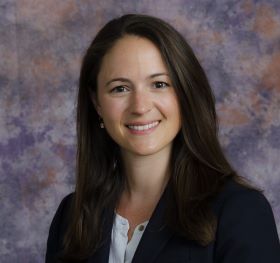
Haley DiBiase Italia, OD
Assistant Professor of Clinical Optometry, NECO
Attending, NECO Center for Eye Care, Commonwealth
Projects: MiSight® 1 Day Post-Approval Study for Effectiveness and Visual Symptoms.
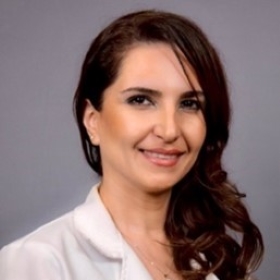
Azadeh Suppappola
Adjunct Assistant Professor of Optometry, NECO
Projects: Clinical Evaluation of Innovative Spectacle Lens in Slowing Myopia Progression (FIN).

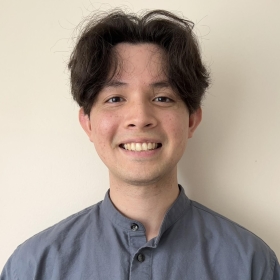
Students
Samrat Sarkar MAppSc (Research) BOptom, PhD ‘27 candidate
Project(s): Impact of Environmental Factors in the Success of Myopia Control Treatments
Morgan Zbikowski, OD/MS ’24 candidate
Project(s): PICNIC Time Spent Outdoors by Children with High or Low Risk of Myopia.
Rachel Harmon, OD/MS ’25 candidate
Project(s): Relationship Between Axial Length and Retinal Structure and Function. Development of Novel ERG and Psychophysics for Evaluation of Horizontal Cell Function in Humans.
Simon Wong, OD/MS ’25 candidate
Project(s): Relationship Between Axial Length and Retinal Structure and Function.
Srini Srirangam, OD/MS ’25 candidate
Project(s): Relationship Between Axial Length and Retinal Structure and Function.
Raviv Katz, OD/MS ’25 candidate
Project(s): Relationship Between Axial Length and Retinal Structure and Function.
Yan Wang, OD/MS ’26 candidate
Project(s): Impact of Environmental Factors in the Success of Myopia Control Treatments.
Mariam OD/MS ’26 candidate
Project(s): Children Vision Lab Social Media Coordinator.
Jonathon OD/MS ’27 candidate
Project(s): Impact of Environmental Factors in the Success of Myopia Control Treatments.
Serena OD/MS ’27 candidate
Project(s): AR Visual Function Limits Imposed by the Retinal Image Quality.
Valaree OD/MS ’27 candidate
Research Assistant
Project(s): PICNIC (Investigating Contributing factors to Nearsightedness In Children).
Valeria OD ’27 candidate
Research Assistant
Project(s): Choroidal and Retinal Thickness Profiles in Children Receiving Myopia Control Treatment.

Alumni
Ashutosh Jnawali, BScOptom, PhD, FAAO
Post-Doctoral Fellow 2020-2023
Project(s): PICNIC (Investigating Contributing factors to Nearsightedness In Children).
Anita Gulmiri, OD, FAAO
Project(s): Clinical Evaluation of Innovative Spectacle Lens in Slowing Myopia Progression (FIN).
Sarah Williams, OD, FAAO
Project(s): Clinical Evaluation of Innovative Spectacle Lens in Slowing Myopia Progression (FIN).
Jennifer Liao, OD, FAAO, FSLS
Assistant Professor of Optometry
Attending, NECO Center for Eye Care, Commonwealth
Project(s): MiSight® 1 Day Post-Approval Study for Effectiveness and Visual Symptoms.
Joanna Liu, OD ’25 candidate
Project(s): CHAMP study clinical trial coordinator.
Twinkle Seghal, OD ’24 candidate
Project(s): CHAMP study clinical trial coordinator.
Courtney Liang, OD/MS ’23
Project(s): Effect of Low Dose Atropine Eye Drops on the Ocular Structure and Function and Reliability of intraocular pressure measurements through the conjunctiva using an iCare tonometer.
Sarah Curtin, OD ’23
Project(s): Effect of Low Dose Atropine Eye Drops on the Ocular Structure and Function and Reliability of intraocular pressure measurements through the conjunctiva using an iCare tonometer. Choroidal and Retinal Thickness Profiles in Children Receiving Myopia Control Treatment.
Ashley Nhan, OD ’23
Project(s): Children Vision Lab Social Media Coordinator.
Becky Sue, OD ’22
Project(s): Choroidal and Retinal Thickness Profiles in Children Receiving Myopia Control Treatment.
Jade Liu, OD ’22
Project(s): CHAMP clinical trial coordinator and Evaluation of the Foraging INteractive D-prime (FIND) Contrast Sensitivity Function (CSF) Test.
Emily Jeon, OD/MS ’21
Project(s): Blur Perception and Retinal Responses in Myopia.
Gabriella Velonias, OD/MS ’20
Project(s): Peripheral Signals in Human Myopia.
Enian Kallamata, OD/MS ’20
Project(s): Ocular Shape and Visual Function in Anisometropia.
Ronalie Baldovino, Southern California College of Optometry OD’20
Project(s): Dynamic Accommodation and Convergence in Human Myopia.
Lenna Walker, OD/MS ’18
Project(s): Blur Perception and Eye Movements: Relationship to Refractive Error.
Maria Coward, OD/MS ’18
Project(s): The Effect of Aging on Peripheral Chromatic Sensitivity.
Anne Bertolet, OD/MS ’17
Project(s): Effects of Myopic Defocus on Choroidal Thickness and Axial Length.
Kristen L. Kerber, OD/MS ’16
Project(s): Myopes Ability to See Blur and Accommodate to Virtual 3D Images; Peripheral Awareness and the Development of Refractive Error.
Steven Weifenbach, OD ’17
Project(s): Development of Feasible Methods to Clinically Evaluate Suppression and Stereopsis Thresholds in Studies of Amblyopia.
Amy Zhang, OD ’16, MS ’17
Project(s): Indoor and Outdoor Eye Movements and Refractive Error.
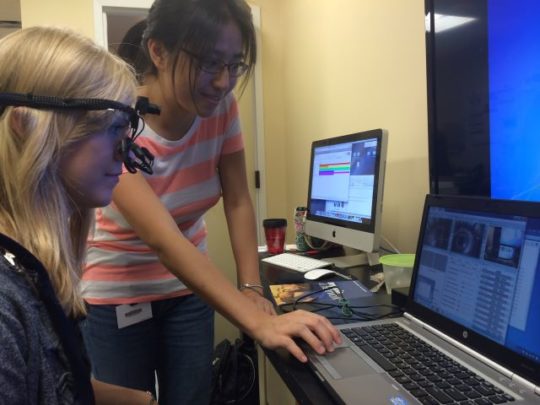
Our myopia research seek to find causative factors of myopization. We hypothesize that deficits in retinal image quality, retinal function and visual processing lead to a cycle of abnormal representation of blur, which may interfere with normal emmetropization and cause excessive ocular elongation and myopia.
Dr. Vera-Diaz and her team aim to identify specific factors that affect image quality and the processing of such images, as well as their interactions. Factors that affect the perception of blur and image quality, and may therefore be catalysts of the failure to control ocular elongation and myopia development in children. They measure peripheral vision and binocular vision behavioral factors and correlate them with individual 3D eye models to understand how these signals affect retinal image quality. They also measure fixational eye movements in outdoor and indoor environments, the interaction between central and peripheral vision, and various cues for accommodation on real 3D targets.
Understanding the signals that activate myopia development and progression will help us and other researchers to design future clinical studies and design more effective optical treatments for the prevention and control of myopia, such as special-design contact lenses, or virtual reality therapies. Our ultimate research goal is to develop individualized interventions for myopia prevention in children at risk for myopia.
A major study towards this goal is the National Eye Institute-sponsored project (NIH R01 EY030518-01) titled longitudinal evaluation of optical and neural factors leading to juvenile myopia. The study has been named PICNIC (Investigating Contributing factors to Nearsightedness In Children).
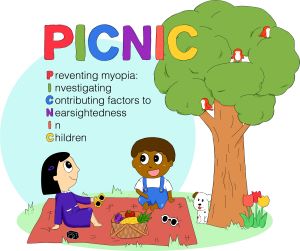
Augmented reality (AR) is a transformative technology that enhances the real-world environment by overlaying digital information on real or virtual objects or locations. The visual components of currently available AR systems have inherent limitations. It is not known how these limitations impact visual function while using these devices, whether performance with AR content is task-specific and eccentricity-dependent, or what image specification is required to maintain visual performance for a given task at a given location in the visual field. To address these challenges, we have developed a system to evaluate the functional limits imposed by individual retinal image quality across a range of functional tasks on a custom-built, large field-of-view, projection AR system across eccentricities and depth planes.
We use a full-scale projection system rather than a head-mounted display (HMD) to allow the simultaneous use of optical measurements devices, to control binocular vergence and accommodation, and to examine the impact of the user’s retinal image quality combined with the limitations induced by the system. For this purpose, we consider the optical, accommodation and retinal shape characteristics of the observers. This project aims to (1) Characterize the Participant’s Retinal Image Quality, and (2) Determine the Acceptable Limit in Degradation in Retinal Image Quality when using AR System for different Functional Tasks and locations in a 3D visual field. We will use these data to develop three parametric estimates of task performance at a given location that can be used to specify minimum image resolution. To accomplish these Aims, we will first determine the optical quality profiles, the dynamic accommodation profiles and the retinal shape for each individual, to then construct individual retinal image quality models. During a second experimental session, once the models are constructed, we will use our novel custom-built full-scale projection AR system to examine the impact of the user’s retinal image quality combined with the limitations induced by the system. We will evaluate various aspects of visual performance that are directly relevant to technical and social use of AR systems: visibility of image blur in 3D across eccentricities and depth planes, stereoacuity thresholds to evaluate object localization in volume space across eccentricities and depth planes, face identification (Identity) and affect identification (Emotion) for different eccentricities and depth planes, and visibility of form and motion with blur, motion and attentional uncertainly.
This will be the first comprehensive evaluation of the impact of the observer’s visual system, including retinal image quality, on the functional limits of AR systems across a range of basic and socially relevant visual tasks.


Images of the custom AR display we have built at NECO for this study.
Left: Side view showing the arrangement of displays.
Right: Front view showing transparent superposition of the images on each plane.
Dr. Vera-Diaz brings her clinical experience on myopia control to clinical trials. She is currently NECO’s site PI of two a multicenter FDA phase III study on myopia control: the CHAMP (NCT03350620) study using NVK-002 eye drops in children and the FIN study using a novel eye glasses design.
At NECO’s Myopia Control Clinic, we obtain data on the effectiveness of the various treatments used. We are particularly interested in the effect on choroidal and retinal thickness in myopia control and how to more effectively apply the available treatments to ensure success in controlling myopia.
In the lab, we investigate the effect of low dose atropine eye drops on the ocular structure and function and the effect of optical treatments (glasses and contact lenses) in the wearer’s visual performance.
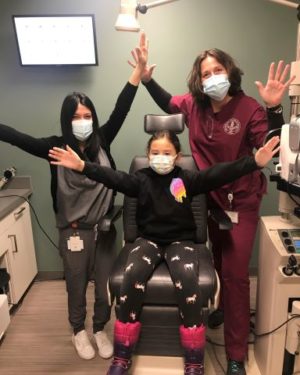
Dr. Vera-Diaz completed a post-doctoral fellowship at Harvard Medical School working with Dr. Eli Peli on the investigation of tolerance of blur and adaptation to blur in people with normal sight and patients with low vision. Their collaborative studies have significant clinical implications, for example, on the prescription of optical devices (e.g. multifocal lenses, IOLs) and vision enhancement aids for patients with visual impairment. We currently investigate the effect of central and peripheral blur as cues to accommodation and the effect of peripheral blur on myopia development.
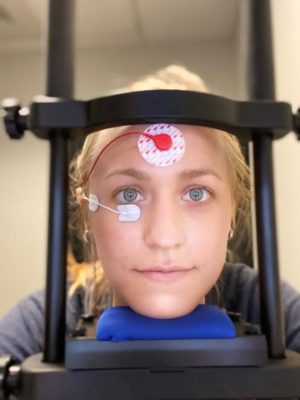
As a clinician, optometry educator, and researcher, Dr. Vera-Diaz understands the importance of accurate refraction on patients’ quality of life, as well as the effect of inaccurate refraction (defocus and higher order aberrations) on the progression of refractive errors. She strives to find the most adequate methods to prescribe correction for refractive errors in children and patients with low vision.
We currently investigate the effect of binocularity and eye preference in binocular refraction and are developing a novel interacting contrast sensitivity test.
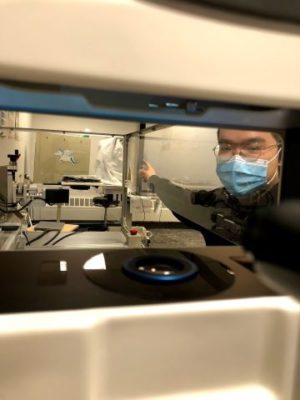
There is a need for more effective techniques to evaluate suppression and stereopsis, particularly when fine and accurate measures are required in clinical research. The importance of stereopsis and binocular vision is increasing with the widespread use of 3D technology. Dr. Vera-Diaz has conducted an initial evaluation of methods to evaluate suppression and stereoacuity thresholds as effective clinical tools with the ultimate goal of developing effective clinical tools to measure stereopsis and suppression. We currently investigate the effect of binocularity and accommodation in refractive error development.
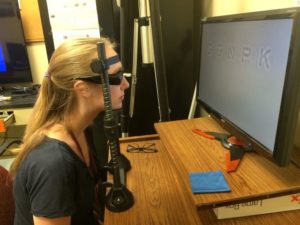
Dr. Vera-Diaz has a strong publication record, with many peer-reviewed publications in high-quality peer-reviewed journals related to myopia and several book chapters.
- Tabernero J, Kallamata E, Velonias G, Vera-Diaz FA. Individualized modeling for the peripheral optics of the human myopic eye. Biomedical Optics Express. 2023. 14(6):2726-35.
- Vera-Diaz FA, Jnawali A, Panorgias A, Bex PJ, Kerber KL. Baseline metrics that may predict future myopia in young children. Ophthalmic & Physiological Optics. 2023. 43(3):466-81.
- Zadnik K, Schulman E, Flitcroft I, Fogt JS, Blumenfeld LC, Fong TM, Lang E, Hemmati HD, Chandler SP and CHAMP Study group. Efficacy and Safety of 0.01% and 0.02% Atropine for the Treatment of Pediatric Myopia Progression Over 3 Years: A Randomized Clinical Trial. JAMA Ophthalmology. 2023. 141(10):990-9.
- Bossie T, Reilly J, Vera-Diaz FA. Comparison of a Novel Binocular Refraction System with Standard Digital Phoropter Refraction. Optometry & Vision Science. 2023. 100(7):451-8.
- Vera-Diaz FA, Hussey E. Myopia management—how to apply the current scientific evidence to our clinical practice. Optometry & Visual Performance. 2022;10(COVID):30-3.
- Panorgias A, Aigbe S, Jeong E, Otero C, Bex PJ, Vera-Diaz FA. Retinal Responses to Simulated Optical Blur Using a Novel Dead Leaves ERG Stimulus. Investigative Ophthalmology & Visual Science. 2021;62(10):1.
- Logan NS, Radhakrishnan H, Cruickshank FE, Allen PM, Bandela PK, Davies LN, Hasebe S, Khanal S, Schmid KL, Vera-Diaz FA, Wolffsohn JS. IMI – Accommodation and Binocular Vision in Myopia Development and Progression. Investigative Ophthalmology & Visual Science. 2021;62(5):4.
- Kosovicheva A, Ferreira A, Vera-Diaz FA, Bex PJ. Effects of Temporal Frequency on Binocular Deficits in Amblyopia. Vision Research. 2019;163:52-62.
- Otero C, Aldaba M, Díaz-Doutón F, Vera-Diaz FA, Pujol J. Stimulus Unpredictability in Time, Magnitude, and Direction on Accommodation. Optometry & Vision Science. 2019;96(6):424-33.
- Jones L, Drobe B, González-Méijome JM, Gray L, Kratzer T, Newman S, Nichols JJ, Ohlendorf A, Ramdass S, Santodomingo-Rubido J, Schmid KL, Tan D, Tan KO, Vera-Diaz FA, Wong YL, Gifford KL, Resnikoff S. IMI – Industry Guidelines and Ethical Considerations for Myopia Control Report. Investigative Ophthalmology & Visual Science. 2019;60(3):M161-M183
- Vera-Diaz FA, Bex PJ, Ferreira A, Kosovicheva A. Binocular temporal visual processing in myopia. Journal of Vision. 2018;18(11):17.
- Otero C, Aldaba M, Díaz-Doutón F, Vera-Diaz FA, Pujol J. Random Changes of Accommodation Stimuli: An Automated Extension of the Flippers Accommodative Facility Test. Current eye research. 2018;1-8.
- Maiello G, Kerber KL, Thorn F, Bex PJ, Vera-Diaz FA. Vergence driven accommodation with simulated disparity in myopia and emmetropia. Experimental eye research. 2018; 166:96-105.
- Vera-Diaz FA, Woods, RL, Peli E. Blur Adaptation to Central Retinal Disease. Investigative Ophthalmology and Visual Science 2017; 58(9):3646-55.
- Maiello G, Walker L, Bex PJ, Vera-Diaz FA. Blur perception throughout the visual field in myopia and emmetropia. Journal of vision. 2017; 17(5):3
- Otero C, Aldaba M, Vera-Diaz FA, Pujol J. Effect of Experimental Conditions in the Accommodation Response in Myopia. Optometry and vision science. 2017; 94(12):1120-1128.
- Kerber KL, Thorn F, Bex PJ, Vera-Diaz FA. Peripheral Contrast Sensitivity and Attention in Myopia. Vision Research. 2016; 125:49-54.
- Vera-Diaz FA, Moore B, Hussey E, Srinivasan G, Johnson C. A Flicker Therapy for the Treatment of Amblyopia. Vision Development and Rehabilitation. 2016; 2(2):105-14.
- Vera-Diaz FA and Johnson C. Enhanced Perceived Clinical Readiness for Second Year Optometry Interns. Optometric Education. 2016; 41(3).
- Durr NJ, Dave SR, Vera-Diaz FA, Lim D, Dorronsoro C, Marcos S, Thorn F, Lage E. Clinical evaluation of a low-cost wavefront aberrometer for measuring refractive errors. Optometry and Vision Science 2015; 92(12):1140-7.
- Dougherty BE, Kehler KB, Jamara R, Patterson N, Valenti D, Vera-Diaz FA. Abandonment of low-vision devices in an outpatient population. Optometry and Vision Science 2011; 88(11):1283-7.
- Vera-Diaz FA, Woods, RL, Peli E. Shape and Individual Variability of the Blur Adaptation Curve. Vision Research 2010; 50:1452-61.
- Woods RL, C Randall C, Vera-Diaz FA, Peli E. A Relationship between Tolerance of Blur and Personality. Investigative Ophthalmology and Visual Science 2010; 51(11):6077-82.
- Vera-Diaz FA, Peli E. Monocular Fixation with the Optic Nerve Head: a case report. Ophthalmic and Physiological Optics 2008; 28:283-90.
- Fullerton M, Woods RL, Vera-Diaz FA, Peli E. Measuring perceived video quality of MPEG enhancement by people with impaired vision. Journal of the Optical Society of America A 2007; 24(12): B174-87.
- Vera-Diaz FA, McGraw PV, Strang NC, Whitaker D. A psychophysical investigation of axial expansion in myopic eyes. Investigative Ophthalmology and Visual Science 2005; 46:758-63.
- He JC, Gwiazda J, Thorn F, Held R, Vera-Diaz FA. The association of wavefront aberrations and accommodative lag in myopes. Vision Research 2005; 45:285-90.
- Vera-Diaz FA, Gwiazda J, Held R, Thorn F. Increased accommodation following adaptation to image blur in myopes. Journal of Vision 2004; 4:1111-9.
- Hazel CA, Strang NA, Vera-Diaz FA. Open- and closed-loop regressions compared in myopic and emmetropic subjects. Ophthalmic and Physiological Optics 2003; 23:265–70.
- Vera-Diaz FA, Strang NC, Winn B. Nearwork induced transient myopia during myopia progression. Current Eye Research 2002; 24(4):289-95.
- Vera-Diaz FA, Doble N. The Human Eye and Adaptive Optics. In: “Topics in Adaptive Optics”. Editor Robert K. Tyson. Intech Open Access Publishing. 2012. DOI: 10.5772/31073. Available from: https://www.intechopen.com/books/topics-in-adaptive-optics/the-need-for-adaptive-optics-in-the-human-eye
- Vera-Diaz FA. Myopia. In: Ocular Periphery and Disorders. Editors: Darlene A. Dartt, Peter Bex, Patricia D’Amore, Reza Dana, Linda McLoon, and Jerry Niederkorn. Oxford: Academic Press. 2011.
- Vera-Diaz FA. Myopia. In: Darlene A. Dartt, editor. Encyclopedia of the Eye, Vol 3. Oxford: Academic Press; 2010. p. 98-105.
- Sobrado Calvo P, Lara Lacárcel F, Vera-Diaz, FA. 2008. Guía Docente y Didáctica de prácticas de Optometría/Educational and Didactic Practices of Optometry. Editum. Murcia, Spain.
Maiello G, Bex PJ, Vera-Diaz FA, inventors; The Schepens Eye Research Institute, Inc., assignee. Prevention and treatment of myopia. World patent application WO2015027218A1. 2015. USA.
- Panorgias T, Vera Vilchez J, Redondo B, Vera-Diaz FA. The Acute Effect of Caffeine in Retinal Responses. ARVO, The Association for Research in Vision & Ophthalmology. 2023;64:4966.
- Vera-Diaz FA, Liang C, Curtin S, Panorgias T. Effect of Low Dose Atropine Eye Drops on Retinal Responses to Clear and Blurred Images. ARVO, The Association for Research in Vision & Ophthalmology. 2023;64:4960.
- Vera-Diaz FA, Kerber KL, Jnawali A, Panorgias T, Bex PJ. Metrics to Predict Future Myopia in Young Children International Myopia Conference. 2022.
- Jnawali A, Kerber KL, Vera-Diaz FA. Longitudinal Changes in the Retinal and Choroidal Thickness in Young Children at Low and High Risk for Myopia. ARVO, The Association for Research in Vision & Ophthalmology. 2022;63:3810.
- Kerber KL, Jnawali A, Vera-Diaz FA. Effect of Stimuli Depth on Static and Dynamic Accommodation Responses in Young Children. Effect of Stimuli Depth on Static and Dynamic Accommodation Responses in Young Children. ARVO, The Association for Research in Vision & Ophthalmology. 2022;63:883.
- Liang C, Vera-Diaz FA. Effect of Low Dose Atropine Eye Drops on Ocular Structure and Function. ARVO, The Association for Research in Vision & Ophthalmology. 2022;63:4315.
- Vera-Diaz FA, Jnawali A, Kerber KL, Bex PJ. Effect of Peripheral Optical Quality in Accommodation Responses of Young Children. ARVO, The Association for Research in Vision & Ophthalmology. 2022;63:885.
- Jnawali A and Vera-Diaz FA. Distribution of Pupil Barycenter and Estimation of Angle Kappa with Lenstar in Children. The American Academy of Optometry’s annual meeting. 2021; Nov 4.Liang
- C and Vera-Diaz FA. Measuring Scleral Rigidity using iCare – a Pilot Study. The American Academy of Optometry’s annual meeting. 2021; Nov 4.
- Kerber KL, Jnawali A, Vera-Diaz FA. Objective Accommodation Measurements with Open-View Autorefraction and Wavefront Aberrometry in Young Children. The American Academy of Optometry’s annual meeting. 2021; Nov 4.
- Su B, Jnawali A, Curtin S, McNaughton L, Vera-Diaz FA. Choroidal and Retinal Thickness Profiles in Children Receiving Myopia Control Treatments. The American Academy of Optometry’s annual meeting. 2021; Nov 4.
- Vera-Diaz FA, Jnawali A, Bex PJ. Peripheral Blur Perception and Optical Quality in Young Children. ARVO, The Association for Research in Vision & Ophthalmology. 2021;62:2889.
- Jnawali A, Bex PJ, Vera-Diaz FA. Evaluation of Retinal Shape and Thickness with Wide Field OCT in Young Children. ARVO, The Association for Research in Vision & Ophthalmology. 2021;62:2890.
- Panorgias T, Jnawali A, Bex PJ, Vera-Diaz FA. Retinal and Perceptual Responses to Peripheral Optical Blur in Children. ARVO, The Association for Research in Vision & Ophthalmology. 2021;62:2923.
- Liu J, Bex PJ, Jnawali A, Vera-Diaz FA. Evaluation of the Novel Foraging Interactive D-prime (FInD) CSF Test. ARVO, The Association for Research in Vision & Ophthalmology. 2021;62:525.
- Vera-Diaz FA, Baldovino R, Bex PJ. Target Depth and Field of View Effect in Dynamic Accommodation and Vergence Responses of Myopes and Emmetropes. ARVO, The Association for Research in Vision & Ophthalmology. 2020;61(7):543.
- Jeong E, Bex PJ, Vera-Diaz FA. Perceptual Responses to Peripheral Optical Blur in Myopia and Emmetropia. ARVO, The Association for Research in Vision & Ophthalmology. 2020;61(7):546.
- Gaiser H, Pangilinan D, Bex PJ, Vera-Diaz FA. Evaluation of Ocular Dominance Tests in Normal Vision. ARVO, The Association for Research in Vision & Ophthalmology. 2020;61(7):5077.

Does your child have nearsightedness (myopia)? If so, they may be eligible to get free contact lenses!
We are recruiting children with myopia and ages 8 to 12 years to participate in a post-market FDA regulated study on MiSight lenses (FDA approved for myopia control). Volunteers will be compensated for participating in this research study, they will also receive free eye exams and contact lenses. The Children’s Vision Lab is at the New England College of Optometry located in Boston. For further details or to book an appointment, contact Lilly Cheam at 857-357-4742.
Email [email protected]
Phone Number 857-357-4742
Location New England College of Optometry, Boston, MA